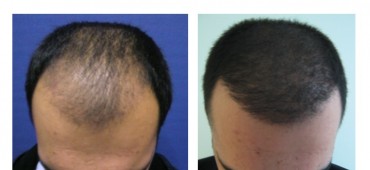Hair transplant or hair restoration is a hair replacement treatment for men and women. This procedure permanently restores hair by transferring new hair follicles into balding or thinning areas. Hair transplants correct male-pattern baldness and other forms of hair loss like eyebrow loss.
Hair restoration surgery usually takes about 4-6 hours and is performed under local anesthesia and sedation. In this surgery, healthy hair follicles are removed from the back and/or sides of the head, and transplanted to areas where hair loss is occurring.
The procedure usually involves transplanting follicular units -the natural bundling of hairs as they grow in the scalp, with each unit containing one to four hairs.
There are two basic technique for hair transplantation. The first one is FUE and the second one is FUT.
The most common technique is follicular unit extraction (FUE), in which each follicular unit is removed one at a time. In this technique one that avoids the linear scar from the donor site- back and side areas where hair follicles are removed. It can result in tiny dots on the back of the head that can hardly be visible if the head is shaved.
The less common technique is „strip harvesting” which issometimes referred to as follicular unit transfer, or FUT , which involves removing a single strip of the scalp where follicles are plentiful (the „donor site”) and then cutting out the follicular units to create grafts for transplanting. These follicular units are tiny little hair bearing cubic units.
The average number of individual grafts needed depends on the patient; anywhere from 1,000 to 3,000 grafts is possible in an average day of surgery.
Your recovery time will depend on the extent of the surgery. Most patients report mild pain, numbness and soreness; this can be controlled with pain medication prescribed by your surgeon. It is common for hairs from the transplanted follicles to fall out in the first month and then regrow. Within 4 to 5 months, they should be growing normally in their new location.
Complications with hair transplant surgery are relatively uncommon. Potential hair restoration side effects may include scarring or uneven hair growth. If the results of the surgery are patchy or if the follicle grafts don’t establish well at the new site, your surgeon may wish to perform a follow-up surgery to correct scarring or to transplant more follicles to fill in thinner areas.
Before and After


